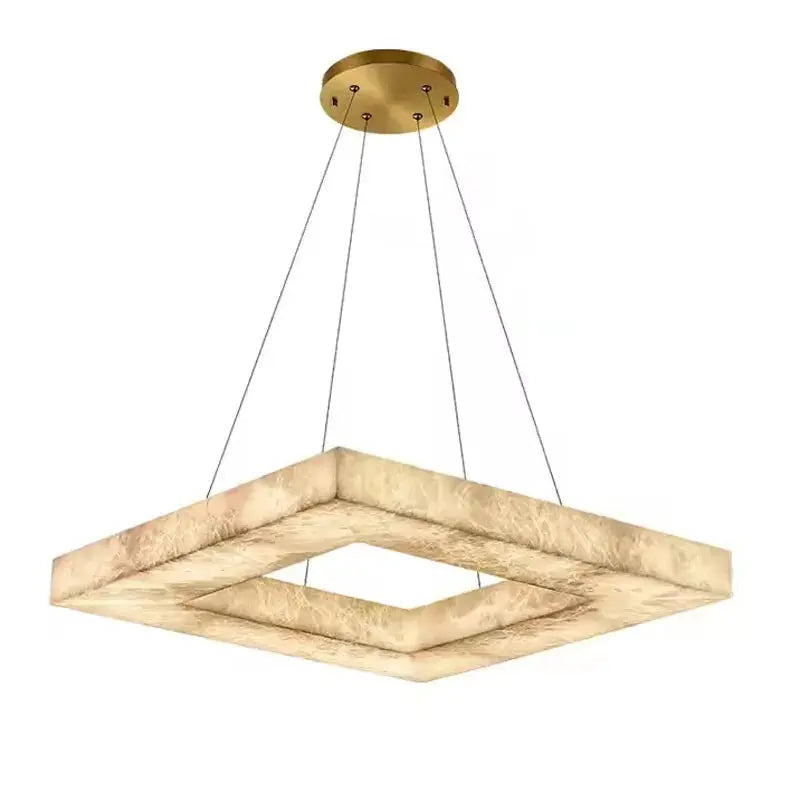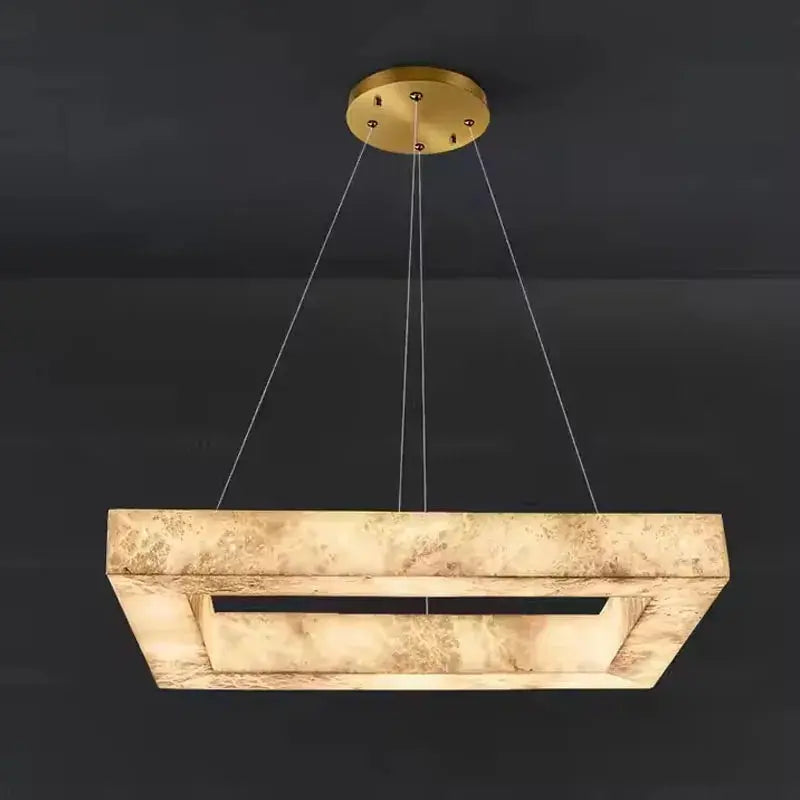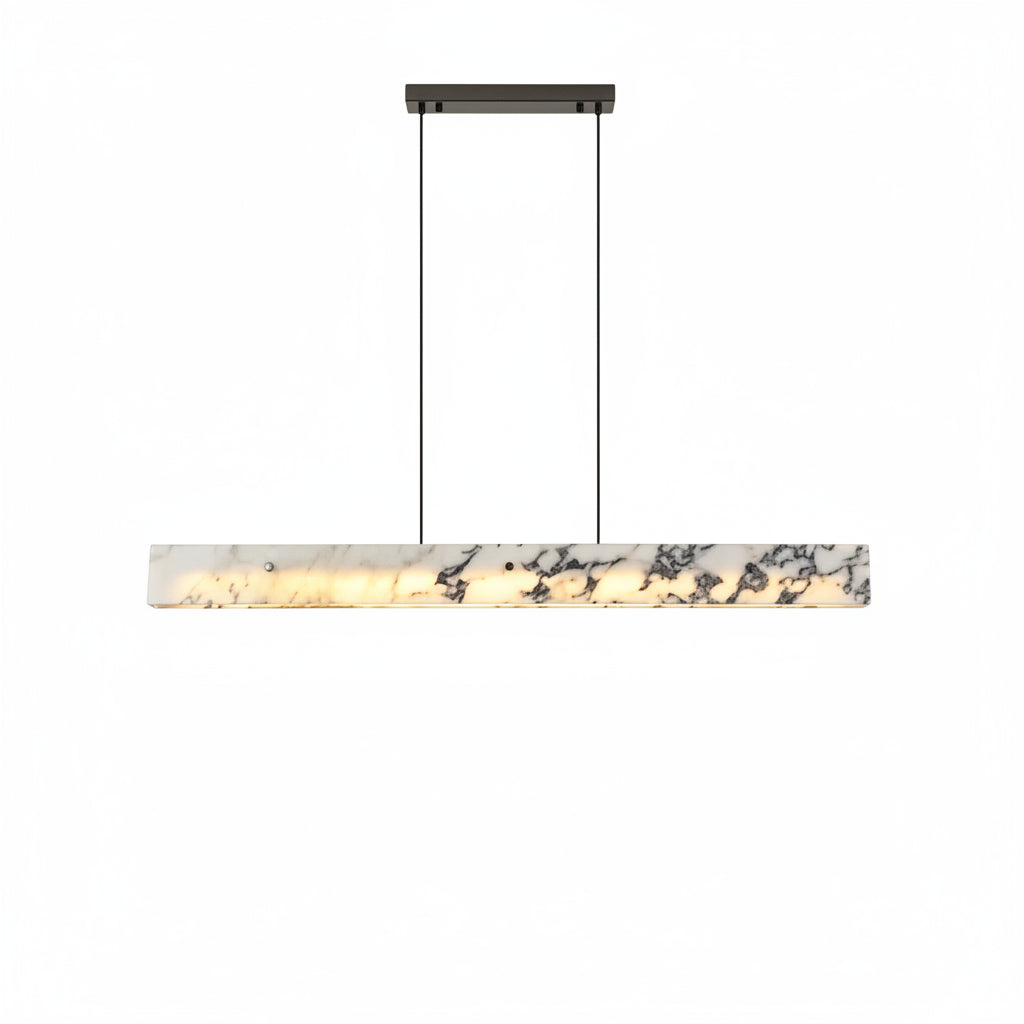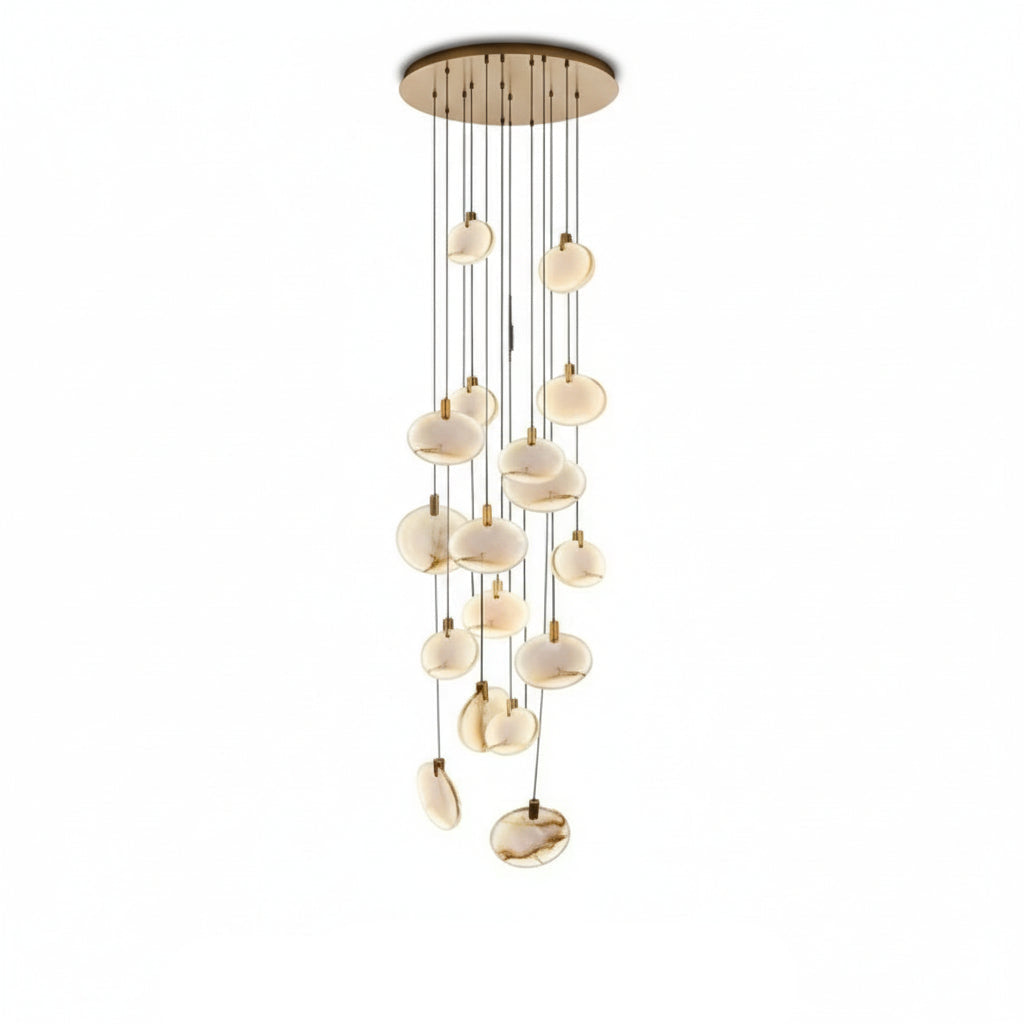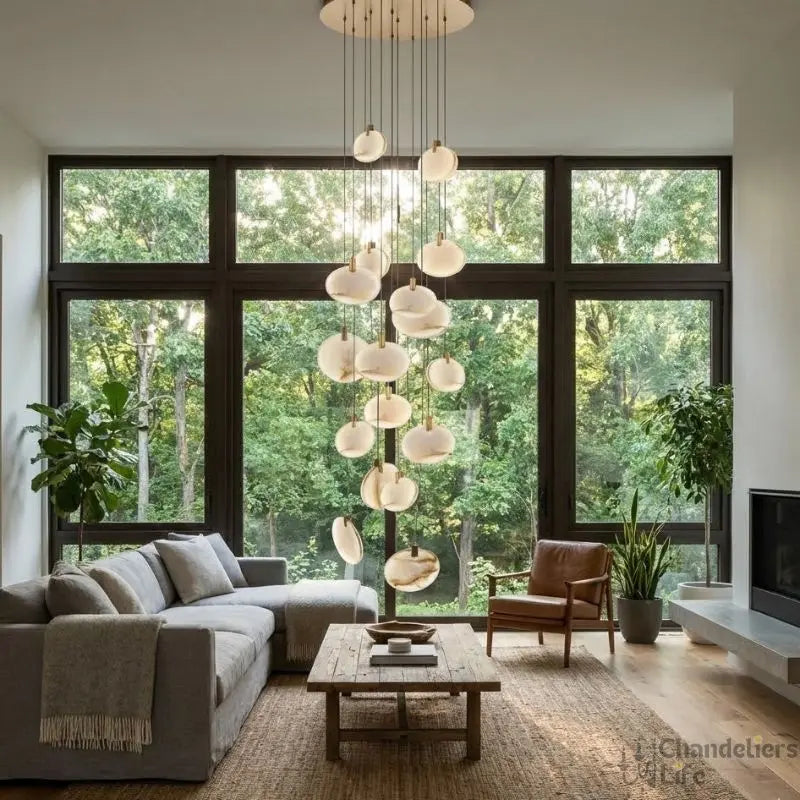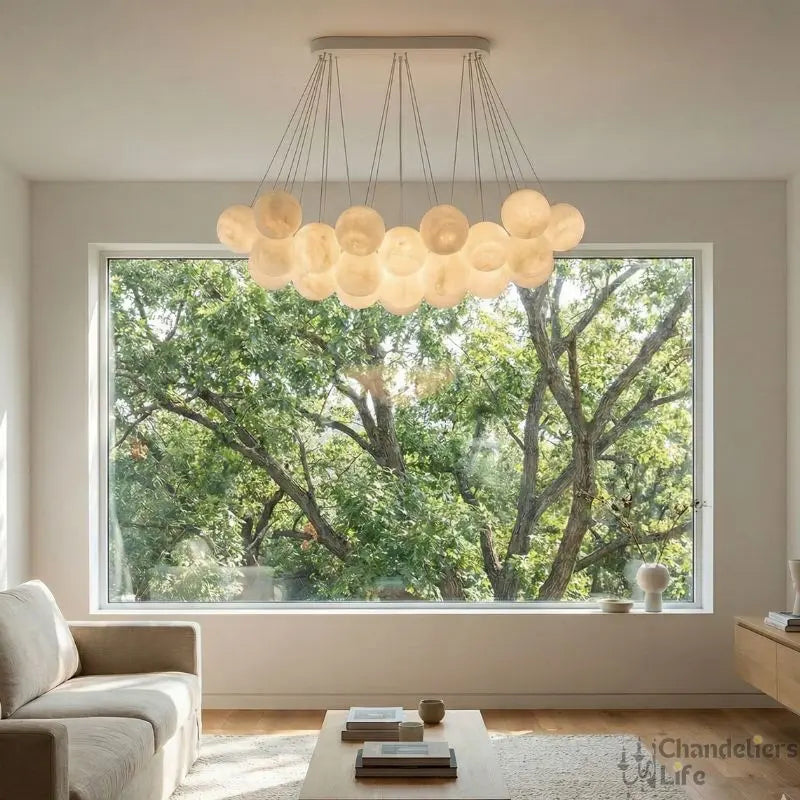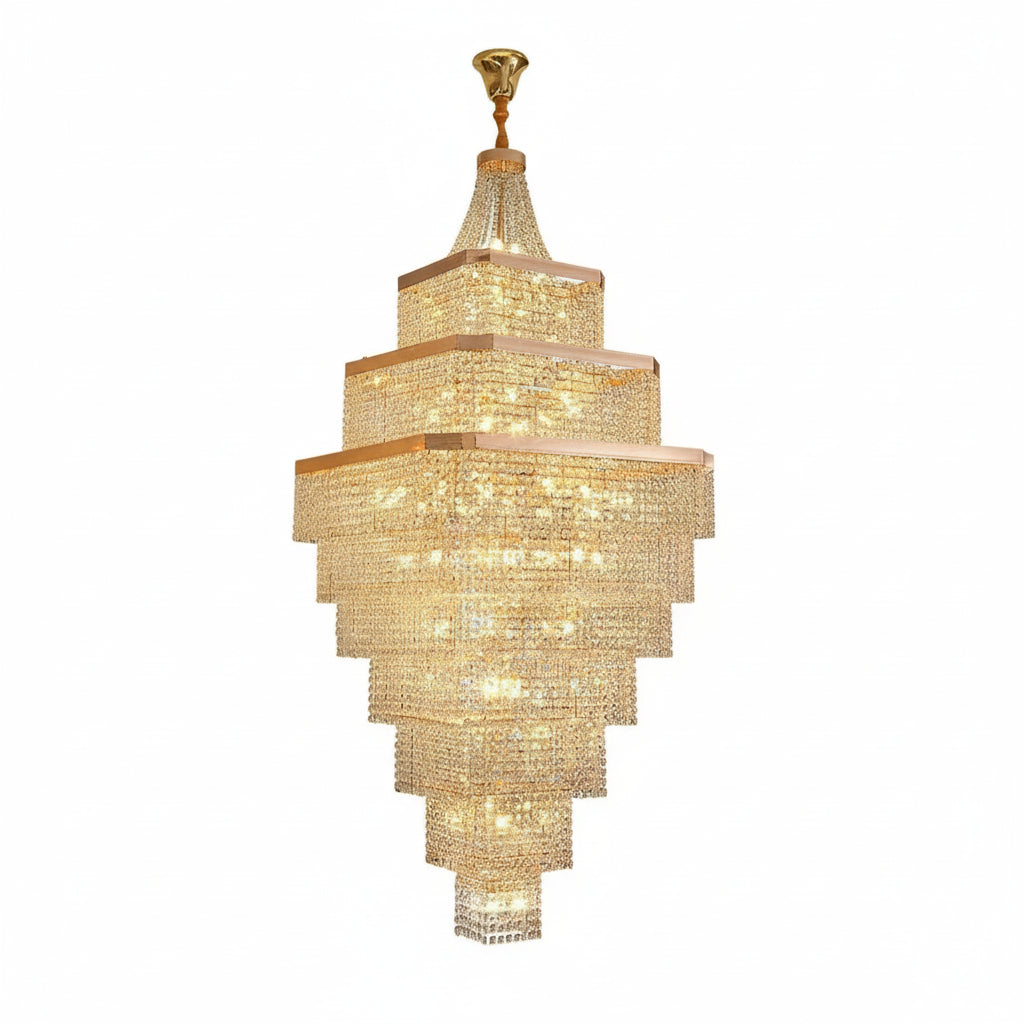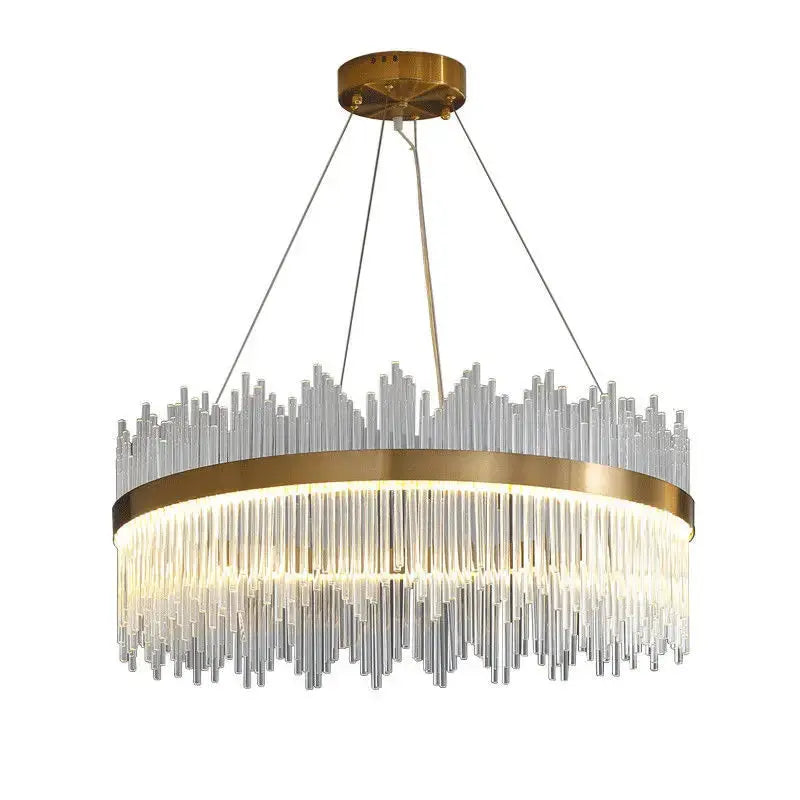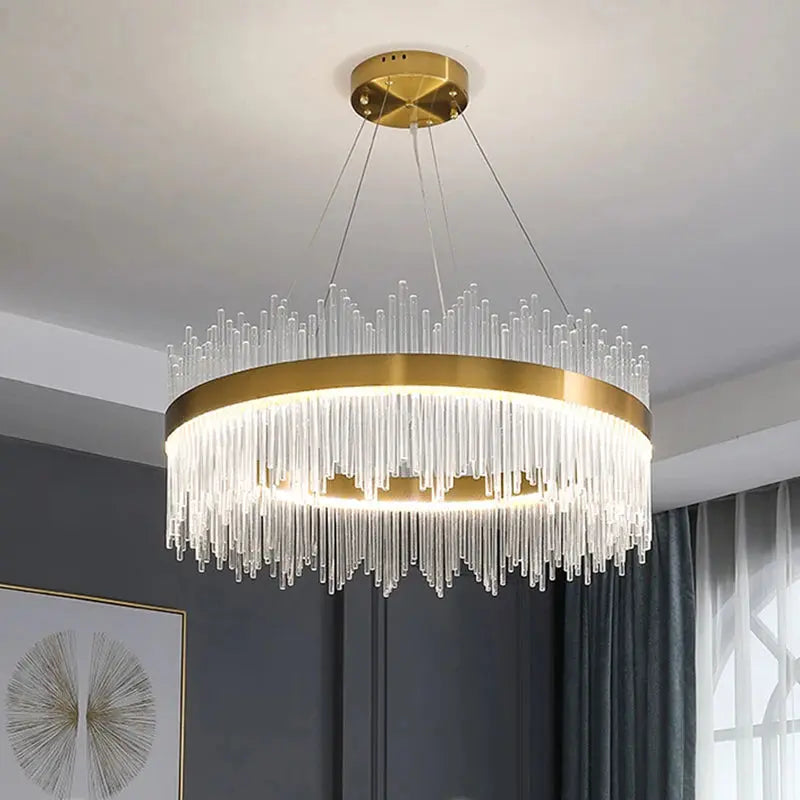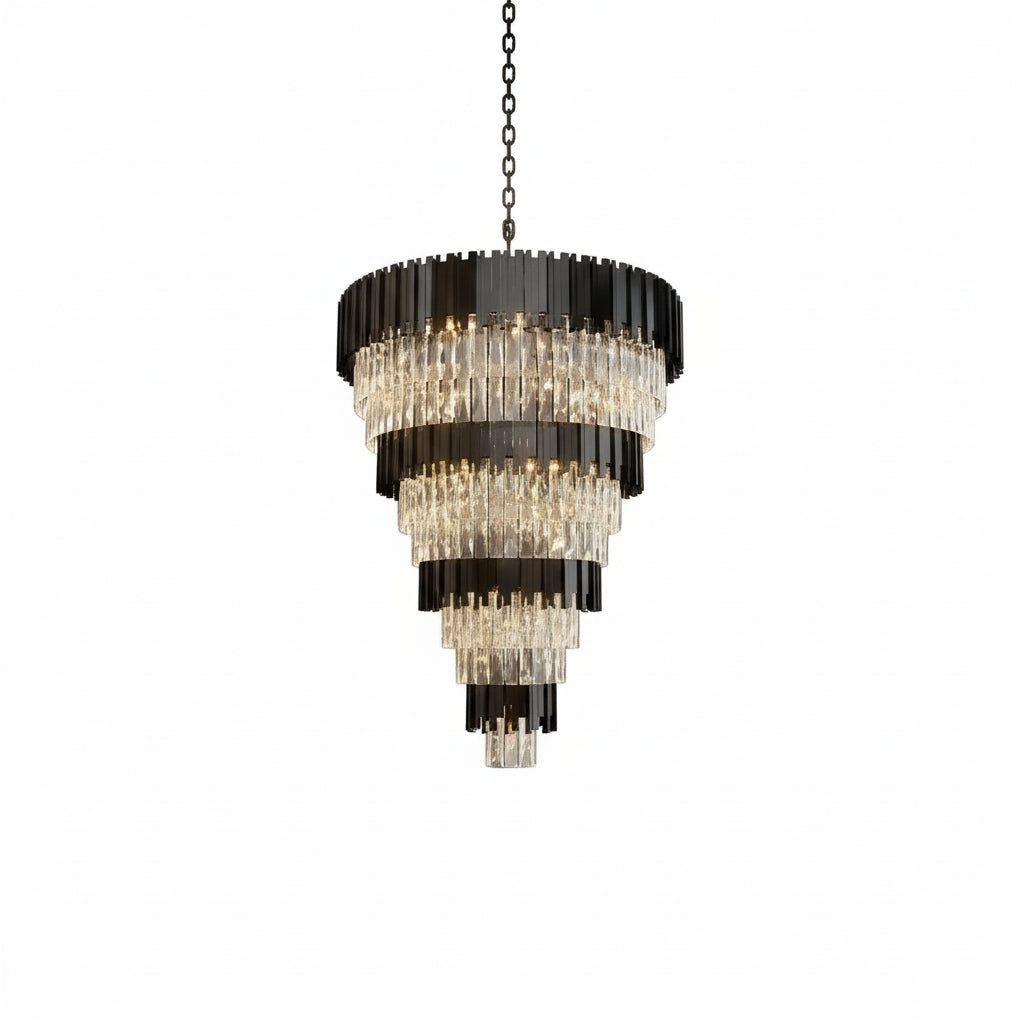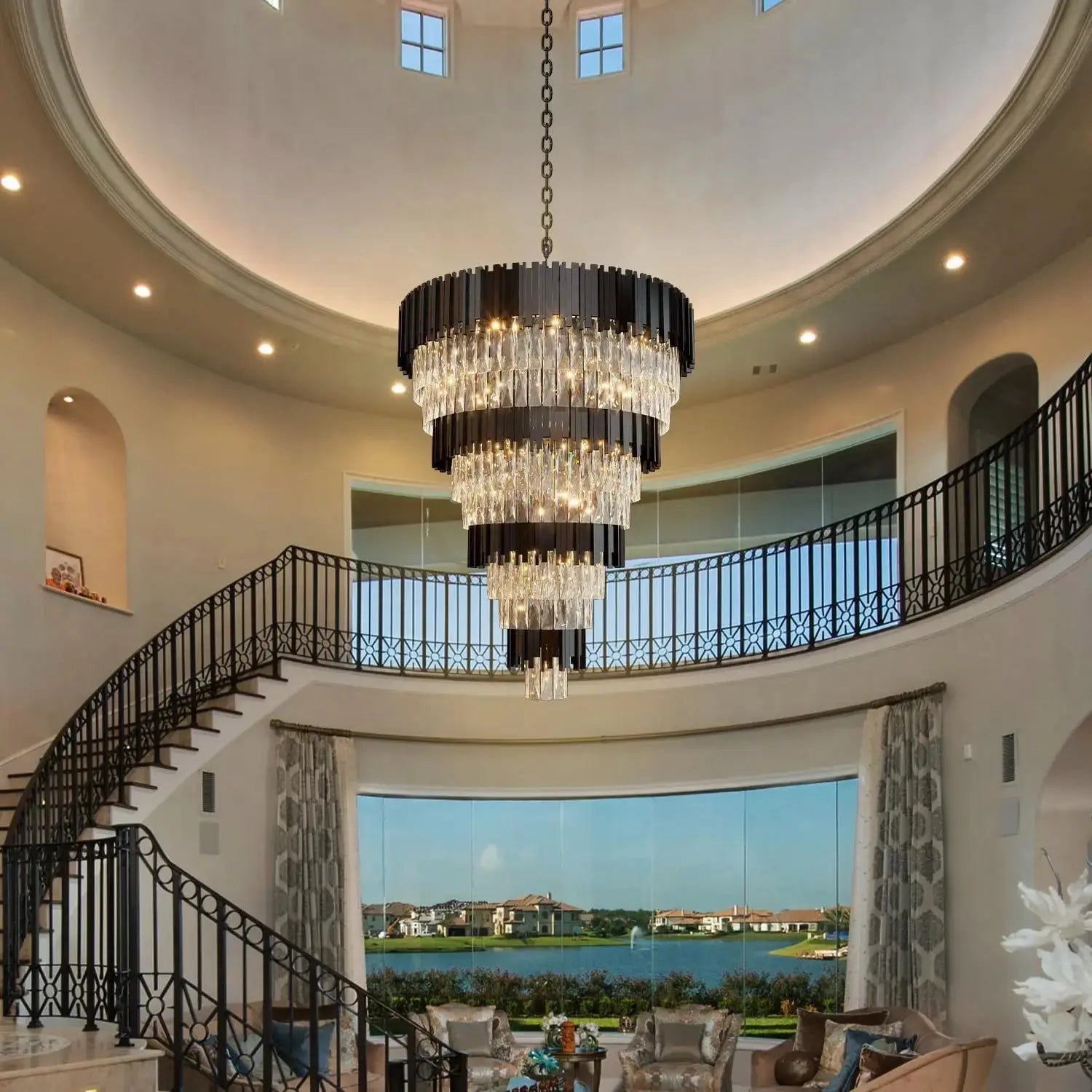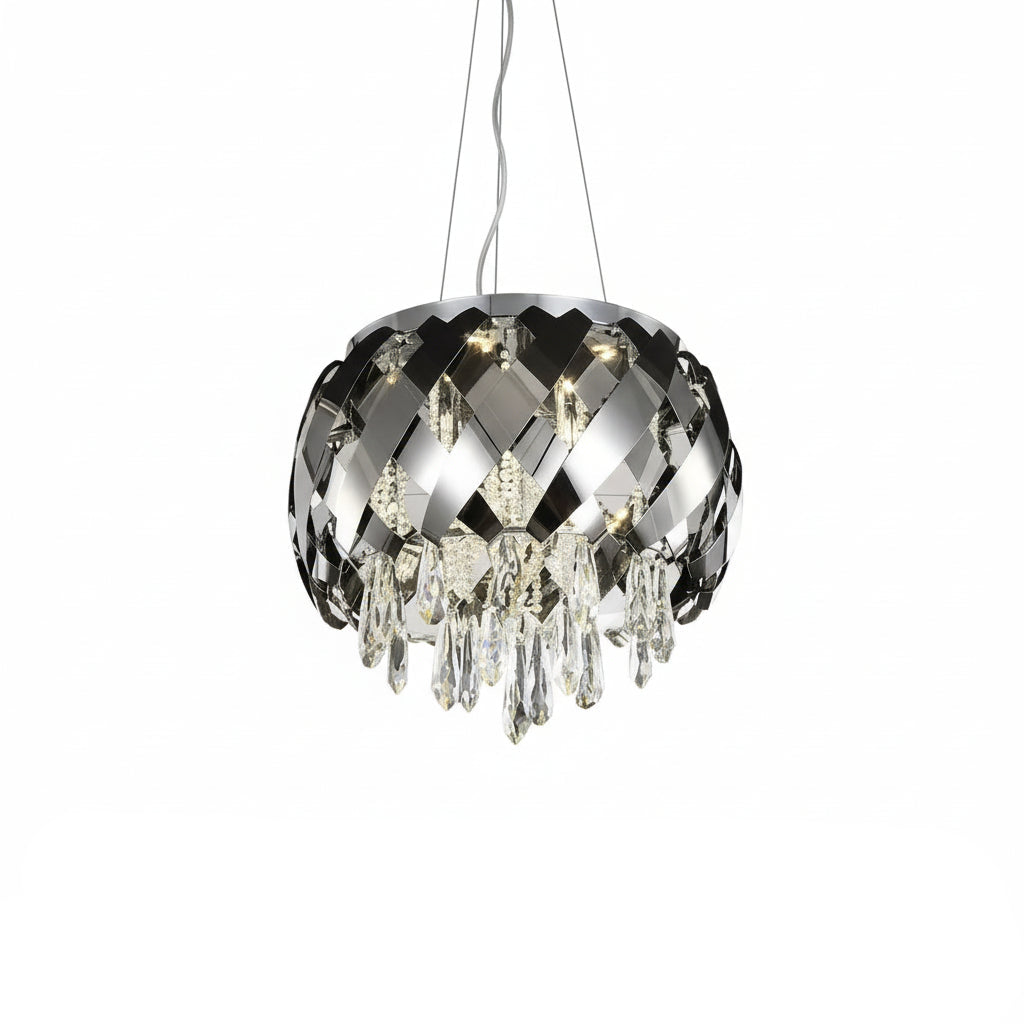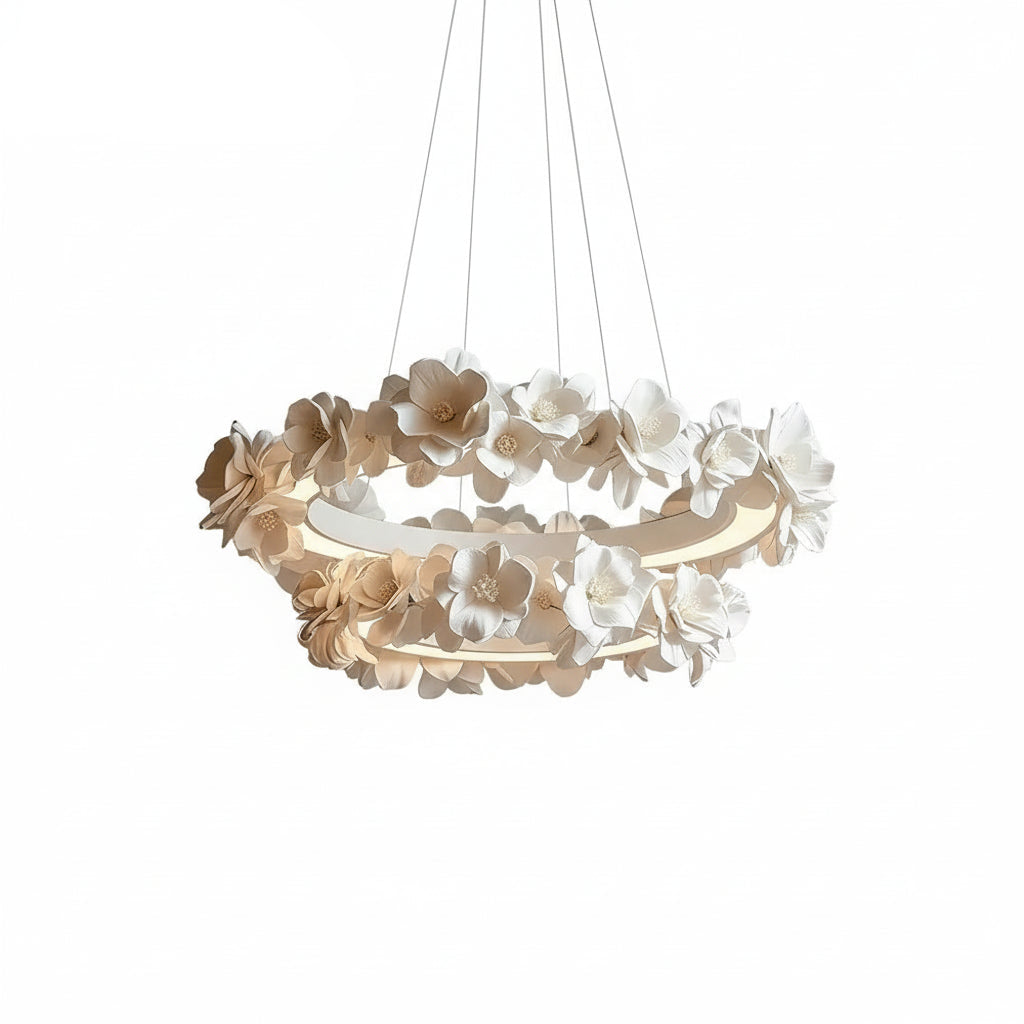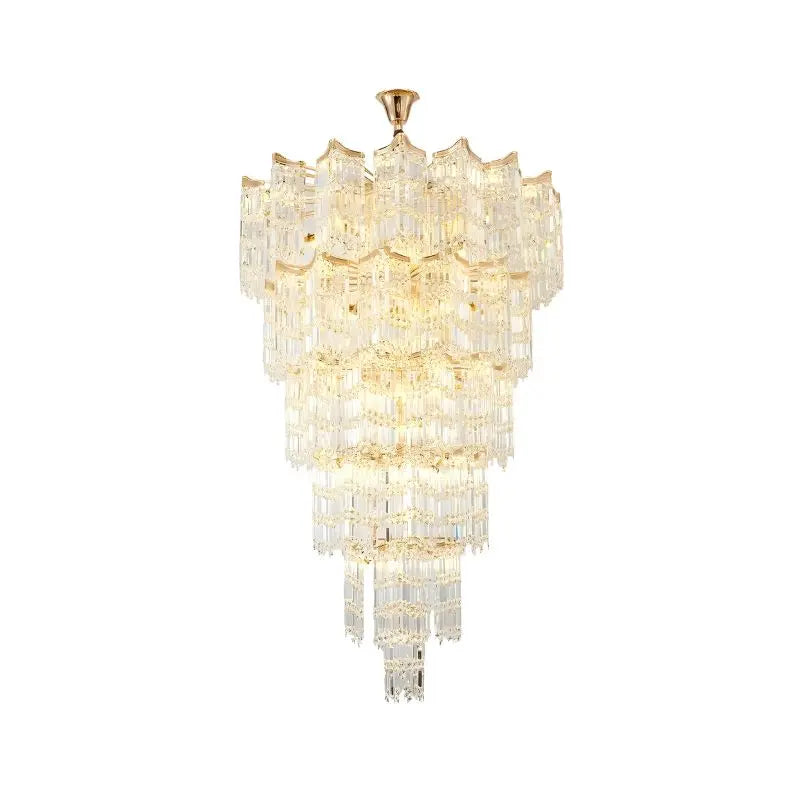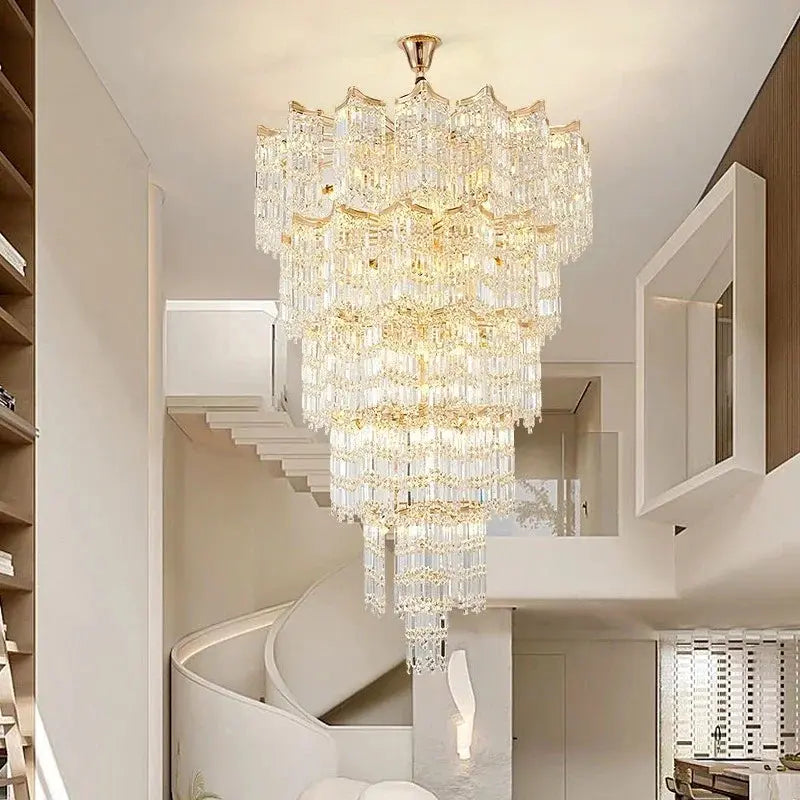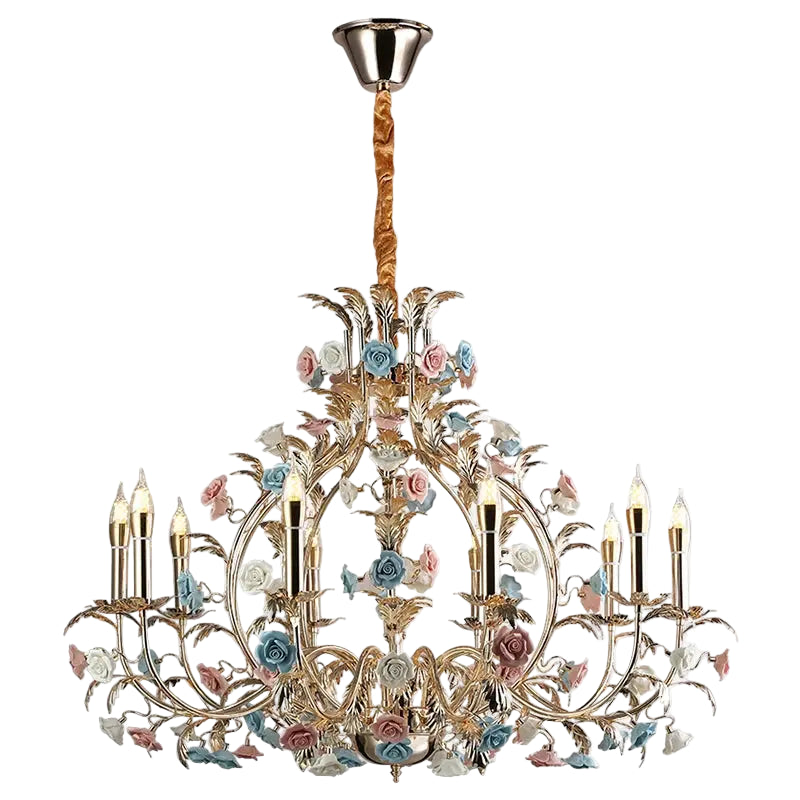Thinking about adding a touch of French country charm to your home? Chandeliers are a great way to do just that. They don’t just light up your space; they bring a sense of rustic elegance that can transform any room into a cozy, inviting haven. Whether you’re drawn to traditional designs or modern twists, there’s a vintage French chandelier that’ll fit your style perfectly. Let’s check out some key takeaways to help you pick the perfect one.
Key Takeaways
- Size matters. Make sure your vintage French chandelier fits the room and the table it's hanging over.
- Mix materials like wood and iron for that classic rustic yet elegant vibe.
- Think about the overall style of your space when choosing a vintage French chandelier design.
- Layer lighting with sconces or lamps for a warm, inviting feel.
- Dimmer switches are your friend for setting the right mood.
The Enduring Charm of Vintage French Chandeliers
Understanding the Appeal of Antique French Lighting
Let's be honest, a lot of modern lighting can feel a bit... well, boring. It's functional, sure, but does it really add anything special to your home? That's where vintage French chandeliers come in. These aren't just light fixtures; they're pieces of history, little sculptures that cast a warm glow and tell a story. For centuries, these beauties have hung in grand homes and cozy cottages alike, bringing a certain je ne sais quoi that mass-produced items just can't replicate. They have this way of making a room feel instantly more sophisticated and lived-in, all at once.
Elevating Your Home with Historical Elegance
Think about it: when you walk into a room with a stunning antique French chandelier, it immediately grabs your attention, right? It's like a piece of jewelry for your ceiling. These fixtures bring a sense of grandeur and a connection to the past that can really transform a space. They’re not just about illumination; they’re about creating an atmosphere, a mood. They add a layer of character that makes your home feel unique and personal, a far cry from the generic look many homes have these days.
Beyond Ordinary Lighting: Adding Character to Your Space
So, why settle for plain when you can have extraordinary? Vintage French chandeliers offer a fantastic way to inject personality into your decor. They can be the focal point of a room, sparking conversations and drawing the eye. Whether it's the intricate metalwork, the sparkle of crystal, or the warm patina of aged materials, these chandeliers bring a depth and richness that ordinary lighting just can't match. They're a statement piece that says you appreciate craftsmanship, history, and a touch of timeless beauty.
- Adds a unique focal point to any room.
- Connects your home to historical design and craftsmanship.
- Creates a warm, inviting, and sophisticated atmosphere.
Choosing a vintage French chandelier is more than just picking a light fixture; it's about selecting a piece that brings a sense of history and artistry into your everyday life. It’s a way to make your home feel truly special.
Exploring Diverse Styles of Vintage French Chandeliers
When you think of vintage French chandeliers, you might picture something grand and ornate, and while that's certainly part of the story, the world of French lighting is actually quite varied. It's not just one look; there are several distinct styles, each with its own personality and charm. Understanding these differences can really help you find the perfect piece for your home.
Opulent Empire and Louis XV Designs
These styles are all about grandeur and a touch of royal flair. Think of the palaces of Versailles – that's the vibe. Empire chandeliers often feature strong, symmetrical lines, sometimes with gilded bronze and classical motifs. They make a bold statement. Louis XV designs, on the other hand, tend to be a bit more playful and curved, with intricate scrollwork and often a focus on delicate details. They feel luxurious and romantic.
- Empire: Bold, symmetrical, classical elements, often gilded bronze.
- Louis XV: Curved lines, ornate scrollwork, delicate details, romantic feel.
- Materials: Frequently incorporate crystal, polished metals, and sometimes enamel.
These styles are perfect for rooms where you want to create a sense of drama and historical elegance. They really shine in formal dining rooms or grand entryways.
Rustic Provence and Farmhouse Variations
Moving away from the palace, we get to styles that feel more grounded and cozy. Provence and French farmhouse chandeliers often use natural materials and have a more relaxed, lived-in look. You'll see a lot of distressed wood, wrought iron, and simpler shapes. These are fantastic for creating a warm, inviting atmosphere. They bring a touch of the countryside indoors.
- Provence: Often features candle-style lights, intricate but rustic metalwork, and aged finishes. Floral motifs are common.
- Farmhouse: Emphasizes distressed wood and wrought iron, with simpler, functional designs.
- Appeal: Creates a cozy, welcoming, and authentic feel.
Modern Interpretations of Classic French Styles
It's not all about antiques, though! Many designers take inspiration from classic French styles and give them a modern update. This means you can get that French elegance with cleaner lines or updated materials. Maybe it's a classic shape but in a matte black finish, or a traditional crystal design with a more streamlined frame. These pieces bridge the gap between old and new, fitting beautifully into contemporary homes that still appreciate a touch of classic charm.
- Blend: Combines traditional French elements with modern aesthetics.
- Adaptable: Works well in transitional or contemporary decor.
- Features: Often includes updated finishes and simplified silhouettes.
Choosing the right style really depends on the overall feel you're going for in your home. Whether you love the drama of the Empire period or the cozy charm of a farmhouse, there's a French chandelier out there for you.
Materials and Finishes That Define French Chandeliers
When you're looking at vintage French chandeliers, the materials and finishes are a big part of what makes them so special. It's not just about the light they give off; it's about the story they tell and the character they bring to a room.
The Beauty of Distressed Wood and Wrought Iron
Many French country-style chandeliers really lean into a charming mix of distressed wood and wrought iron. This combination gives the fixture a rustic, lived-in feel, almost like it's been passed down through generations. The wood, often with a weathered look, pairs beautifully with the strength and intricate scrollwork that wrought iron can offer. It’s this interplay that gives these chandeliers their authentic, aged appeal while still being sturdy and well-made. Think of wooden beads strung along dark, curly iron arms – that’s the classic look.
Sparkle and Sophistication with Crystal and Glass
To balance out that rustic vibe, many French chandeliers incorporate crystal and glass. Delicate crystal drops or prisms can add a lovely sparkle, catching the light and scattering it around the room. Glass elements, like candle covers or shades, add a touch of refinement. This mix of rougher materials like iron with the delicate nature of crystal or glass creates a really interesting contrast. It’s what makes a chandelier feel both grounded and glamorous at the same time.
Popular Finish Options for Timeless Appeal
The finish on a chandelier can really change how it looks and how it fits into your home's decor. Here are a few popular choices:
- Weathered Zinc: This gives a soft, muted look that works well with lots of different color palettes.
- Oiled Bronze: A richer, darker tone that can make a chandelier stand out, especially against lighter walls.
- Whitewashed Driftwood: This finish brings a bit of a coastal feel, perfect for a light and airy atmosphere.
Choosing the right materials and finishes is key to finding a chandelier that not only lights up your space but also adds a significant decorative element. It’s about finding that perfect blend of old-world charm and personal style.
These details matter. For instance, a fixture with adjustable arms, like the Vintage Adjustable Spider Pendant Chandelier, offers flexibility in design and can be adapted to suit your specific layout needs, blending industrial charm with modern adaptability.
Integrating Vintage French Chandeliers into Your Home

So, you've picked out a gorgeous vintage French chandelier. Awesome! Now, how do you make it feel like it truly belongs in your space? It's not just about hanging a light fixture; it's about weaving a piece of history and elegance into the fabric of your home. Think of it as adding a signature piece to your personal gallery.
Creating a Cozy and Inviting Atmosphere
This is where those French chandeliers really shine. They have this knack for making a room feel instantly warmer, more lived-in, and just plain welcoming. Forget harsh, sterile lighting; a vintage French piece casts a soft, inviting glow that makes you want to curl up with a book or gather friends for a relaxed evening. It’s about setting a mood, a feeling of comfort and understated luxury.
- Warm Bulbs are Key: Always opt for bulbs that give off a warm, yellowish light rather than a stark white. It makes a huge difference in the overall feel.
- Dimmer Switch Magic: Seriously, get a dimmer. It lets you control the mood from bright and functional to soft and intimate with just a flick of a switch.
- Consider the Scale: A chandelier that's too big can overwhelm a small room, and one that's too small can get lost. Aim for a size that feels balanced.
A well-placed vintage French chandelier doesn't just illuminate; it transforms. It adds a layer of character and history that mass-produced fixtures simply can't replicate, making your home feel more personal and unique.
Enhancing Entryways, Dining Rooms, and Living Spaces
Where you put your chandelier matters. It's like choosing the right spot for a piece of art. Your entryway is the first impression, so a stunning chandelier here sets the tone immediately. In the dining room, it becomes the centerpiece, making every meal feel a bit more special. And in the living room, it can add a touch of sophistication and warmth, drawing the eye and creating a focal point.
- Entryway: A smaller, elegant chandelier can greet guests with style. It says, 'Welcome, you're somewhere special.'
- Dining Room: This is prime chandelier territory. It should ideally be centered over your dining table, creating a beautiful focal point for gatherings.
- Living Room: Consider hanging it over a coffee table or in a seating area to define the space and add a touch of glamour.
Blending Rustic and Refined Decorative Elements
This is where the real fun begins – mixing and matching! Vintage French chandeliers are masters at bridging the gap between rustic charm and refined elegance. They look fantastic paired with more modern furniture, or they can complement existing rustic elements like exposed beams or a stone fireplace. The trick is to create a dialogue between the old and the new, the rough and the smooth.
- Material Mix: Don't be afraid to pair a wrought-iron chandelier with sleek, modern furniture, or a crystal-laden piece with a distressed wooden table.
- Texture Play: Combine the chandelier's texture with other elements in the room – think plush rugs, smooth leather, or rough-hewn wood.
- Color Harmony: Ensure the finish of your chandelier complements the overall color palette of your room, whether it's a dark bronze against light walls or a distressed white with natural wood tones.
Achieving Perfect Ambiance with French Chandeliers

The Power of Dimmer Switches for Mood Control
Let's talk about setting the mood. A vintage French chandelier is beautiful, no doubt, but its real magic happens when you can control the light. That's where dimmer switches come in. They're not just fancy gadgets; they're your ticket to transforming a room's feel instantly. Think about it: you can go from bright and airy for a family brunch to a soft, intimate glow for a quiet dinner, all with a simple flick of a switch. It’s like having multiple lighting moods in one fixture. Installing them is usually pretty straightforward, and honestly, it makes a huge difference in how you experience your space.
Layering Light with Sconces and Table Lamps
While a chandelier is often the star, it doesn't have to do all the work. Layering your lighting is key to creating depth and warmth. Imagine the main glow from your chandelier, then add the softer light from wall sconces flanking a mirror or artwork. Add a couple of table lamps on side tables for reading nooks or to cast a gentle light across the room. This mix of light sources prevents harsh shadows and creates a more inviting, lived-in feel. It also means you have practical light where you need it, not just overhead.
Here’s a quick look at how different light sources work together:
| Light Source | Purpose |
|---|---|
| Chandelier | Main focal point, general illumination |
| Wall Sconces | Accent lighting, ambient glow |
| Table/Floor Lamps | Task lighting, creating cozy zones |
Creating Intimate Lighting Zones
Beyond just general brightness, you can use your lighting to create specific areas of interest or coziness within a larger room. Maybe you want a reading corner that feels particularly snug, or a dining area that feels more personal. By strategically placing lamps or using directional sconces, you can draw attention to certain features or create pockets of softer light. This makes a room feel more dynamic and adaptable to different activities and times of day. It’s about making your space work for you, not just looking pretty.
Don't underestimate the power of a well-placed lamp. Sometimes, just one or two strategically positioned lights can completely change the atmosphere of a room, making it feel more intimate and welcoming than relying solely on overhead fixtures.
Selecting the Ideal Vintage French Chandelier
So, you've decided a vintage French chandelier is the way to go. Awesome choice! But now comes the fun part – picking the right one. It’s not just about grabbing the prettiest thing you see; you've got to think about how it'll actually work in your space. It’s like picking a piece of jewelry for your house, you want it to fit perfectly.
Considering Size and Scale for Your Room
This is probably the most important bit. A chandelier that's too big can make a room feel cramped, and one that's too small just gets lost. For dining rooms, a good rule of thumb is to measure the width of your table. The chandelier's diameter should be about half to three-quarters of that measurement. So, if your table is 40 inches wide, look for a chandelier around 20 to 30 inches across. For other rooms, like living rooms or entryways, you can use the room dimensions. Add the length and width of the room in feet, and that number in inches is a good starting point for the chandelier's diameter. For example, a 12-foot by 14-foot room would be a good fit for a chandelier around 26 inches wide. And don't forget the hanging height! Generally, you want about 30 inches of clearance between the bottom of the chandelier and the tabletop for dining rooms, or about 7 feet from the floor in a living area to avoid bumping your head.
Matching Chandelier Style to Your Decor
Think about the overall vibe of your home. Are you going for something super ornate and grand, like an Empire or Louis XV style with lots of crystal and intricate metalwork? Or maybe something a bit more relaxed and rustic, like a French country piece made from wrought iron or distressed wood? It’s important that the chandelier feels like it belongs. If your furniture is modern and sleek, a super fussy antique might look out of place, and vice versa. Try to find a style that complements your existing furniture and architectural details. Sometimes, a simpler design with just a hint of French flair can be just as impactful.
Choosing the Right Finish for Cohesion
The finish of your chandelier can really tie everything together. Common finishes for vintage French pieces include aged brass, bronze, wrought iron, and sometimes painted finishes like antique white or black. Consider the other metal finishes in your room – do you have brushed nickel faucets or a gold-toned lamp? While you don't need everything to match exactly, picking a finish that harmonizes with your existing hardware will make the space feel more put-together. A dark wrought iron can add a rustic touch, while a polished brass might lean more towards elegance. It’s all about creating a consistent look and feel.
Selecting a vintage French chandelier is about more than just illumination; it's about choosing a statement piece that reflects your personal style and adds a layer of history and character to your home. Take your time, consider the proportions, and choose a style and finish that speaks to you and your space.
A Timeless Glow for Your Home
So, there you have it. Adding a vintage French chandelier to your home is more than just picking out a light fixture; it's about bringing a piece of history and a whole lot of charm into your space. These beautiful pieces can really change the feel of a room, making it feel warmer and more inviting. Whether you're going for a grand statement or a subtle touch of elegance, there's a French chandelier out there that's just right for you. Think about the style you love and the mood you want to create, and you'll find a fixture that truly shines. It's a wonderful way to make your home feel special and uniquely yours.
Frequently Asked Questions
What makes vintage French chandeliers so special?
Vintage French chandeliers are special because they bring a piece of history and fancy design into your home. They were made with great care and often have beautiful details like crystals or fancy metalwork, making them more than just lights – they're like art that also lights up your room!
Can I use a vintage French chandelier in a modern home?
Absolutely! A vintage French chandelier can be a stunning contrast in a modern home. It adds a unique touch of elegance and character that you won't find with regular lights. Think of it as a statement piece that makes your modern space feel more interesting and personal.
What are the most common materials used in French chandeliers?
You'll often see French chandeliers made from materials like brass, bronze, and wrought iron, which give them a classic look. Many also feature sparkling crystal or colored glass, especially in older styles, to catch and reflect light beautifully.
How do I choose the right size chandelier for my room?
Picking the right size is important so your chandelier looks balanced. A good rule of thumb is to measure your room's length and width in feet, add them together, and that number in inches is a good starting point for the chandelier's diameter. For dining rooms, make sure it fits nicely over your table without being too big or too small.
Are French chandeliers hard to install?
Installing a chandelier usually requires some basic electrical knowledge and might need a second person to help hold it. If you're not comfortable with electrical work, it's always best to hire a professional electrician to make sure it's installed safely and correctly.
How can I make my chandelier's light less harsh?
To make the light softer and more inviting, use dimmer switches. This lets you control how bright the chandelier is. Also, choosing bulbs with a warm color tone, like those that mimic candlelight, can create a cozier atmosphere. You can also add other light sources, like lamps, to spread the light around.


